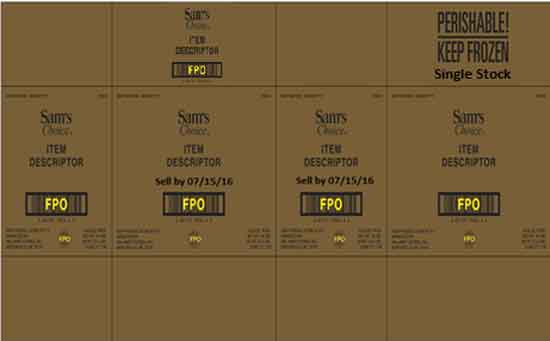It was an interesting year in supply chain generally and in the retail supply chain especially in 2016.
Let’s look at some of the top retail supply chain stories in the past year, with a special focus on those that impact vendor performance management:
In January, Sports apparel retailer Finish Line makes news when it says troubles with new Distributed Order Management and Warehouse Management Systems causes it to lose $32 million in sales over Holiday period. The CEO resigns and the chief supply chain officer let go shortly thereafter.
Compliance Networks Says... |
 |
| In April, Walmart causes quite a stir in its vendor community, after recently releasing new standards for carton marking that have the potential to add huge costs to its suppliers. |
 |
|
|
In February, there is a report from Bloomberg that Amazon seems to be taking steps to build out an end-to-end global logistics service capability that would compete with major 3PLs and carriers, perhaps not only to move its own freight but those of others. Moves include getting licenses in both US and China to act as a wholesaler for ocean container shipping.
Also in March, reports that Target is doing a deep dive on its SKU counts, in-store logistics processes and more in an attempt to reduce out-of-stocks and inventory levels. Retailer is testing putting more product on the sales floor rather than the stockroom by redesigning shelves, looking at case pack quantities from vendors, and reducing total SKU counts in many categories.
Meanwhile, Target also says it is largely dumping packaged software for forecasting and replenishment to write its own, more suited to needs of omnichannel commerce. Is the traditional DRP-based model dead, SCDigest asks?
Visit the Retail Vendor Performance Management home page to learn more
and subscribe to the monthly newsletter.
In April, Walmart causes quite a stir in its vendor community, after recently releasing new standards for carton marking that have the potential to add huge costs to its suppliers. Requirements ban use of inkjet printing for case code bar coding, meaning suppliers would have to maintain inventories of cartons specific to each SKU, among other changes.

That same month, news that Target is telling vendors that it will issue a chargeback of as much as 5% of the invoice for shipments that arrive as little as one day late, plus chargebacks of $5,000-$10,000 for suppliers who fail to provide complete and accurate master data for their products.
In June, Walmart brings reporters into Bentonville DC for demonstration of a drone taking physical inventories on continuous basis, flying the aisles and using an imaging system.
In July, news that struggling retailer Kmart is adopting strategy of moving all inventory out to store floor and getting rid of "back room" storage to reduce labor costs from double handling and decrease inventory levels.
In August, Walmart announces it will spend $3.3 billion to acquire ecommerce site Jet.com, as it hopes to supercharge its on-line success. Jet was just founded in 2015 by Marc Lore, who had also started Diapers.com and then worked for a while at Amazon after it acquired Diapers.com. Lore will lead all of Walmart's ecommerce efforts, as former head Neil Ashe resigns.
That sane month, sports apparel giant Nike signs a contract with giant private equity firm Apollo Global Management to create a new generation supply chain, including production facilities, in the Americas. Nike says it hopes change from former Asian-based production strategy will get products to customers more quickly, including more rapid support for a planned increase in customized merchandise.
Also in August, news that Walmart is reducing the "window" for on-time deliveries from vendors from four days to two. The change will go into effect in February, 2017. In addition, the fill rate requirement is being raised from 90% to 95%.
In September, the Wall Street Journal breaks story that despite numerous denials, Amazon really is working on plan to develop its own parcel delivery network for itself and others, competing with UPS and FedEx. The plan is code named "Consume the City," and the story notes that Amazon has also recruited dozens of UPS and FedEx executives and hundreds of other UPS workers over the past few years.
In October, a Macy's executive says the company plans to have 100% of all items in every store RFID tagged by the end of 2017, and that nearly all of those tags will be applied by vendors.
In December, Amazon announces opening of its "Go" store in Seattle, which has no cashiers or traditional point of sale terminals. Store instead uses RFID, sensors and artificial intelligence to track what shoppers buy, in approach that is literally "grab and go," with customers taking products off the shelf and right into shopping bags or backpacks and then out the door, the purchase quickly confirmed via smart phone app.
Any comments on this article? Please send below.
Your Comments/Feedback
|